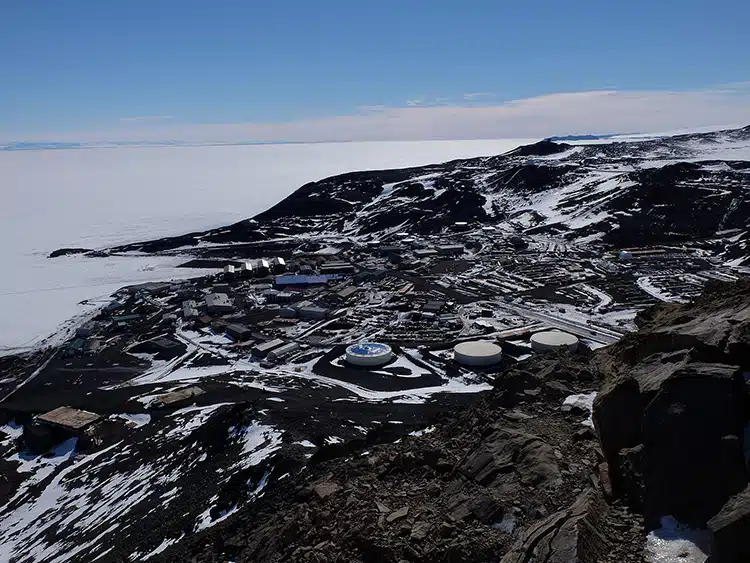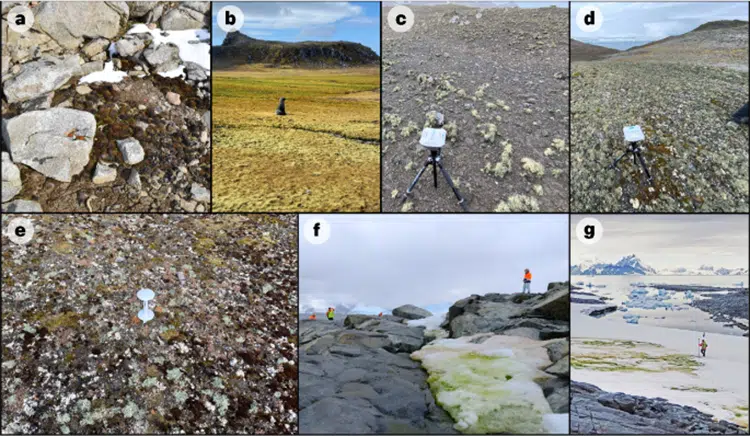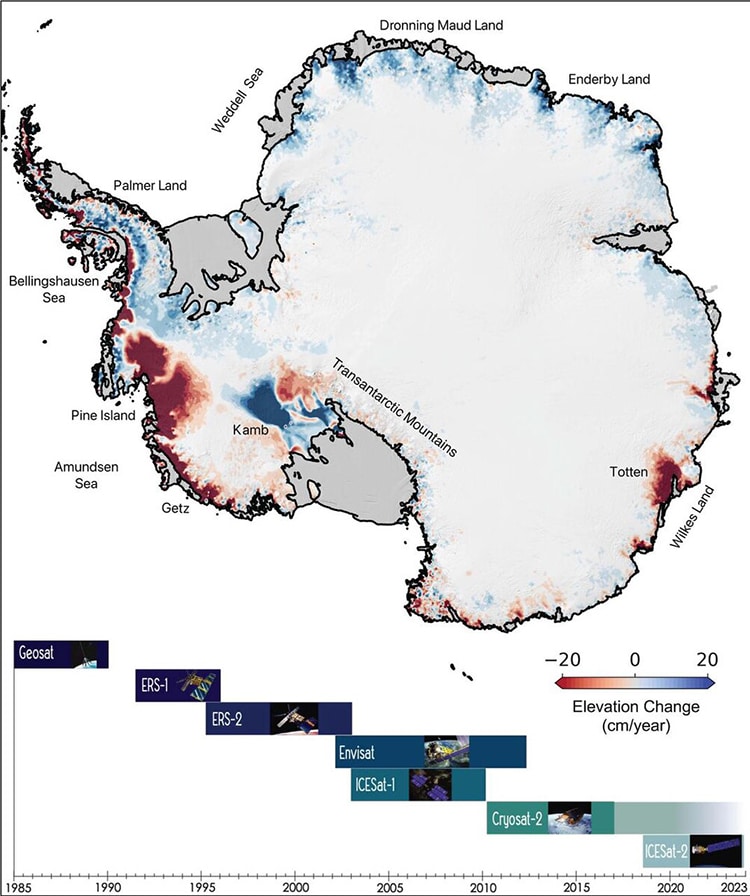
McMurdo Station in Antarctica. (Photo: Marco Feldmann/FH Aachen via Wikimedia Commons, CC BY 2.0)
When people think of Antarctica, they likely think of vast expanses of barren ice and very few colors beyond the snowy white visible on the horizon. However, despite the admitted prevalence of ice on the continent, there is plant life too. This vegetation survives on photosynthesis, making sustenance out of sunlight. But until recently, the extent of plant life on Antarctica was not well known, as so much of the continent is remote and rarely visited. A new study published in Nature Geoscience uses satellite imagery to map and quantify the plant life across the continent for the first time ever.
Most of the plant life on Antarctica falls into one of three categories: moss, lichen, and algae. These plants absorb carbon from the atmosphere, and they help process nutrients in the soil. Tracking their presence on the continent is critical to assessing conservation efforts as well as keeping an eye on the effects of climate change.
As ice melts, more plant life may result in the gap created. Researchers from the University of Edinburgh partnered with the Norwegian Institute for Nature Research, the British Antarctic Survey, and the Scottish Association for Marine Science to examine satellite imagery from a satellite of the European Space Agency.
The researchers also took measurements on the ground during summer expeditions. They combined their aerial and on-ground observations to estimate that there is about 45 square kilometers (17.4 square miles) of photosynthetic life on the continent. It is not evenly distributed, but rather 80% is present on the Antarctic Peninsula and nearby islands.
Peter Fretwell, one of the paper authors, noted in a statement, “Getting an accurate map of the of photosynthetic life of the continent gives us a baseline for assessing future change. As the continent warms and ice melts, we expect that areas of rock outcrop will expand, and vegetation will colonize more ground. This new map enables us to monitor these consequences of climate change.”
The first full survey of Antarctic vegetation across the continent has demonstrated the effect climate change has had on plant life.

Arctic vegetation springs up. (Photo: Walshaw et al., f. A Thgomson)

Photosynthetic life of different sorts. (Photo: Walshaw et al.)

Antarctica’s ice sheets have changed a lot since 1985. (Photo: Wikimedia Commons, Public domain)
h/t: [IFL Science]
Related Articles:
Largest Geothermal Development in America Taking Shape in Utah
Battery-Like Metals Generate “Dark Oxygen” in the Deep Ocean
Shocking Photos Taken 15 Years Apart Show How Much Swiss Glacier Has Melted
Giant Permafrost Crater “Gateway to Hell” Is Rapidly Expanding in Siberia
